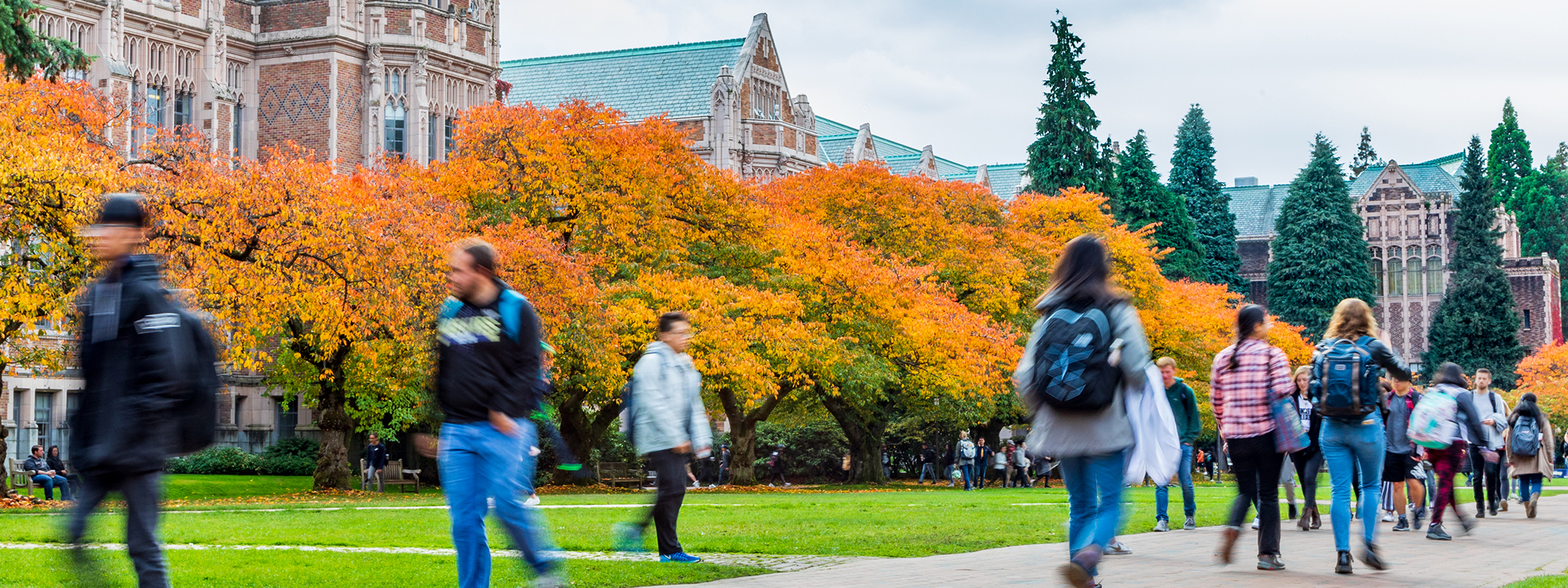-
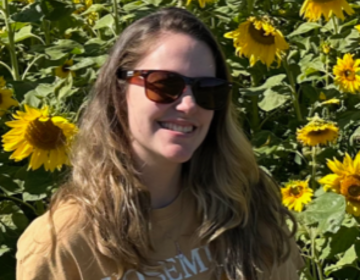
I am First-Generation: Kaitlynn Lilly
"I would also tell students to not count themselves out. You miss 100% of the shots you don't take and there is a reason you got into college in the first place. You are capable of anything you may put your mind to, even if no one before you has done it" - Kaitlynn Lilly (M.S. Applied Mathematics, 2023), Ph.D. Applied Mathematics, 2027
10/10/2023 | College of Arts & Sciences -
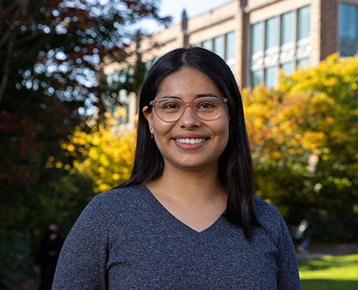
I am First-Generation: Elizabeth Nova
"To me, being a current first-generation student navigating a Ph.D. means owning my space in academia. It's a reminder that the path to this point wasn't easy, but now that I'm here, my educational journey holds immense significance for me, my family, and my community. This isn't just about getting a degree—it's about breaking barriers and creating opportunities for those who will come after me. It also means staying grounded and being profoundly grateful for all the doors that opened through my hard work and determination." - Elizabeth Nova (Ph.D. Sociology, 2026)
10/09/2023 | College of Arts & Sciences -
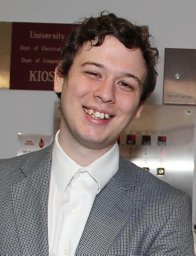
I am First-Generation: Chad Hoyer
"My first-gen experience has primarily impacted the development of my scientific communication skills. Due to prominent feelings of 'I am too dumb to be here' and "I don't have the background to understand this" throughout my undergraduate experience, I find it intuitive to explain problems from different angles (e.g., less abstract or mathematical) and be sensitive to students who do not have a strong math background. Basically, I am not afraid to be super 'handwavy' 😎." - Chad Hoyer, College of Arts & Sciences Chemistry Research Scientist
10/07/2023 | College of Arts & Sciences -

I am First-Generation: Andrea Pardo
"As a transfer student, I was in a situation where I would not have been admitted to UW Seattle as a high school applicant. I needed that additional foundation at a community college to prepare me for the University and show the UW I was capable of academic achievement. After two years at the UW, I just felt like I wasn’t 'done' — so being here, belonging and becoming a staff member means being an example and showing how the differences in a diversity of backgrounds is what strengthens our entire community here at the UW." - Andrea Pardo (B.A., Comparative History of Ideas, 2006), Graduate Program Manager for Biology
10/07/2023 | College of Arts & Sciences -
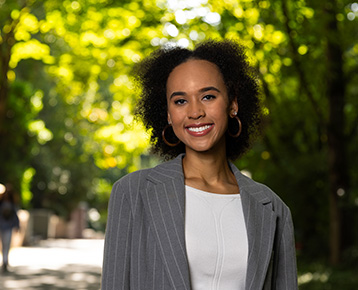
I am First-Generation: Tiana Cole
"Being a first-generation graduate is meaningful to me because it represents an accomplishment in my life that was once not attainable for my ancestors. My college experience gave me an opportunity to find my voice and understand the ways that I can cast my influence to positively impact and uplift others. I believe that first-generation college students and graduates bring unique insight that can transform our communities to become stronger, healthier, and more equitable. It is rewarding to be a part of a community that is creating pathways for others to follow behind, while also contributing to inspiring others that adversity can lead to unveiling our innate qualities and passions." - Tiana Cole (B.A., Journalism and Public Interest Communications, 2021), Program Administrator for UW Continuum College
10/07/2023 | College of Arts & Sciences -
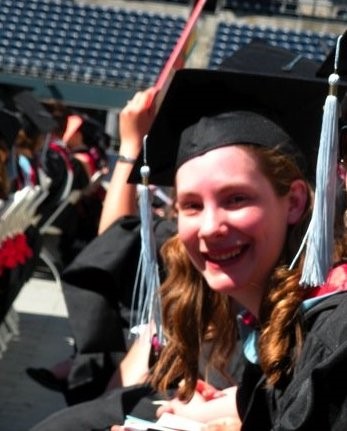
I am First-Generation: Heather Werckle
"Having navigated applying to college, transferring to a different four-year school to finish my undergraduate degree, and then earning multiple graduate degrees, all by myself with no family knowledge to guide me, I became very skilled at learning and negotiating the ins and outs of university policies and procedures. This segued perfectly into a career in student affairs, where I use those skills and knowledge to help students on their own educational journeys every day. I don’t want other students to have to 'figure it out as they go' like I did and suffer some of the same mistakes I made, so I try to build in as much support as I can to make sure they don’t get tripped up by complex processes." - Heather Werckle, Assistant Director of Academic Services for Communication Leadership, Department of Communication
10/07/2023 | College of Arts & Sciences -

I am First Generation: Sariah Burdett
"My parents had always encouraged me to go to college but as an Autistic kid from the middle of nowhere, I thought I wouldn’t be able to succeed in higher education and was destined for a small-town life. It wasn’t until Mr. Sugitan, my 10th grade English teacher, pushed the class to consider college and took our class on a field trip to UW that I could see myself succeeding in a big university like UW. Thanks to his encouragement, I dedicated myself to going to a university, preferably UW." - Sariah Burdett (B.A., History, Korean, and Asian Languages & Cultures, 2022), Program Coordinator, Department of French & Italian Studies
10/07/2023 | College of Arts & Sciences -

I am First-Generation: Andrea Alfaro
"My early schooling made me feel like I was navigating a lonely path, where no one truly understood my unique challenges. However, everything changed when I discovered the profound meaning of being a first-generation college student. I surrounded myself with like-minded peers and supportive professors who believed in my educational journey, greatly boosting my self-confidence. Now, as a dedicated staff member, my personal first-gen experience serves as a wellspring of inspiration. My goal is to empower students to seek help and take ownership of their education." - Andrea Alfaro, Program Coordinator, Department of Economics
10/07/2023 | College of Arts & Sciences -
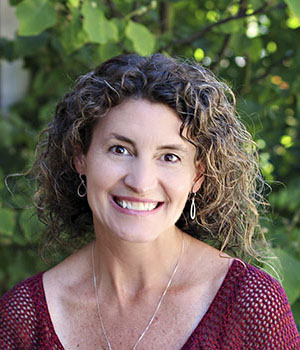
I am First-Generation: Kristie Spencer
"I wear my first-gen status as a badge of honor. It represents strength, courage, and tenacity. I welcome every opportunity to relay this message to first-gen students and to solidify the belief that they belong here, and the University is greatly enriched by their unique perspectives!" - Kristie Spencer, Professor, Associate Chair, Graduate Program Coordinator; Department of Speech & Hearing Sciences
10/06/2023 | College of Arts & Sciences -

National First-Generation College Celebration
In the College of Arts & Sciences, we are proud to support the success of first-generation students, faculty, and staff, and celebrate their many contributions to our university community.
10/05/2023 | College of Arts & Sciences
